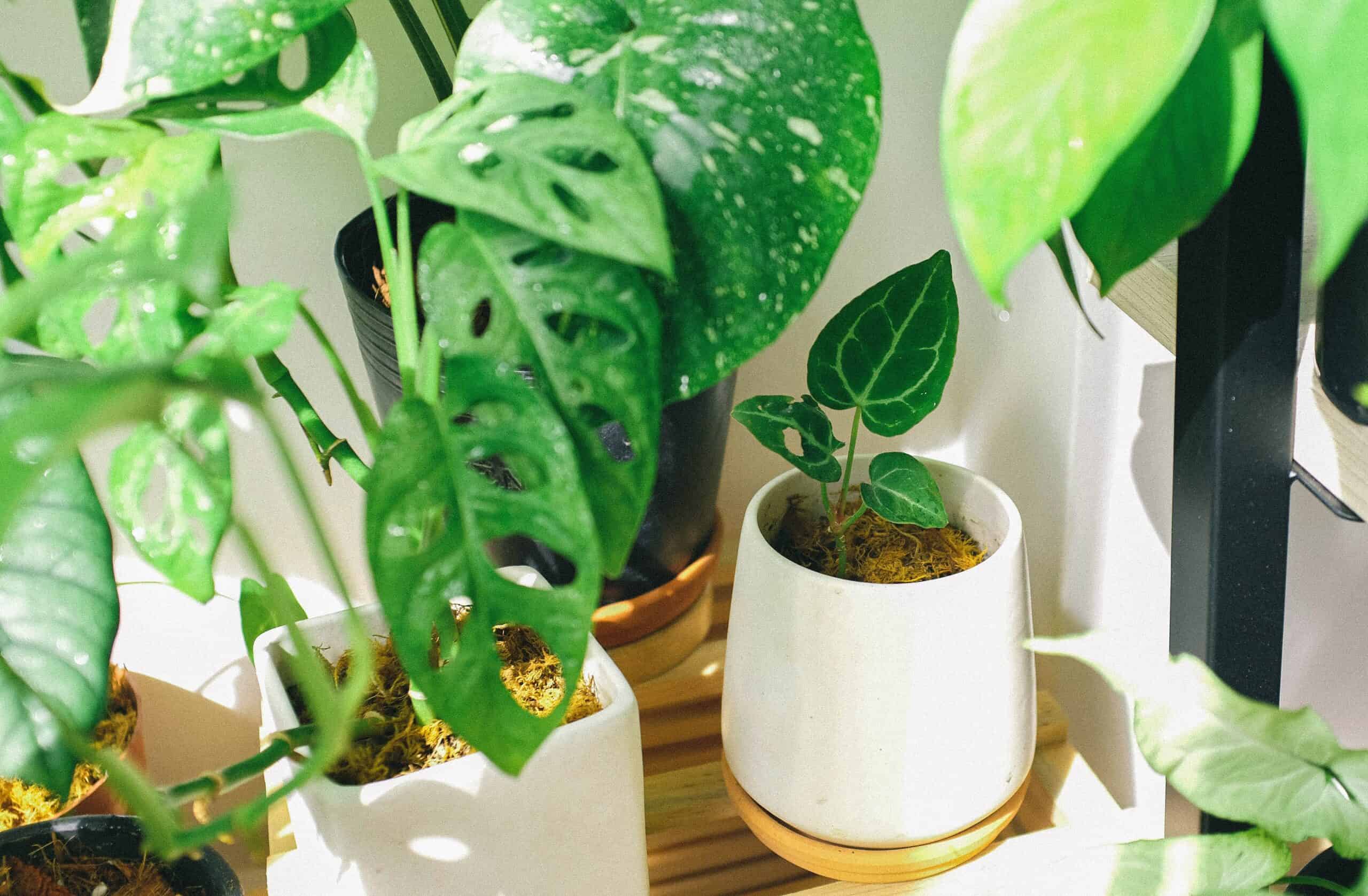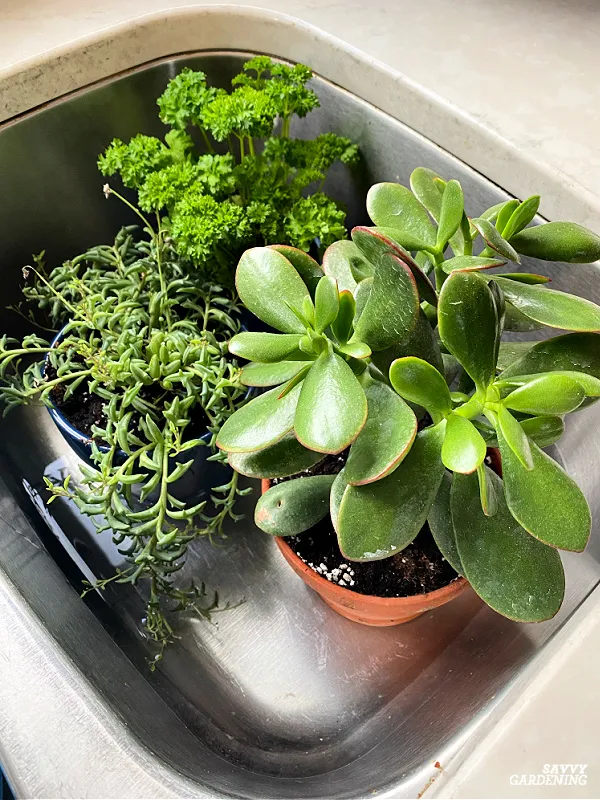
We’ve all erred as plant parents by overwatering our offspring. In trying to ensure our snake plants and monsteras never get parched, sometimes we keep them a little too hydrated.
Despite the fact that the roots do require water, they also require some breathing space. Fortunately, by watering plants from the bottom, you get the best of both worlds: As well as preventing them from submerging, you can prevent them from drowning.
It’s simple to learn how to bottom water plants, and we’ll teach you everything you need to know.
Table of Contents
Plant Bottom Is An Effective Technique
Watering is one of the most challenging tasks to master when it comes to houseplants. Plants die if they receive insufficient water. Your plants will die if you give them too much water. It makes sense that both novice and seasoned plant parents worry about watering. Bottom watering is a method that can be used in this situation. Continue reading to find out more about the numerous advantages of bottom-watering plants.
What Is Bottom Watering?
Simply put, bottom watering involves hydrating your plant’s roots from the bottom up.
When watering your container plants, you should let the soil absorb it through the drainage holes in the bottom of the pot rather than pouring it on top of the soil.
Benefits Of Bottom Watering Plants
Bottom-watering plants have a lot of advantages. The main reasons I irrigate my indoor plants using this method are listed below.
Reduce over and under watering – Bottom watering plants have proven to be a successful strategy for preventing both under and overwatering. It fully saturates the soil, allowing the plant to dry out to the proper level before you water it again.
Consistent watering – Bottom watering ensures that the soil mass as a whole is evenly moistened. Dry patches may result from top watering, but this is not a problem when water is slowly absorbed from the bottom. You can be sure that your plants are receiving adequate water.
Reduces mess – I’ll admit that when I use a watering can, I’m a little bit of a messy waterer. I usually spray water on the plant, nearby plants, and occasionally even the table or shelf. By keeping the water in a contained tub or tray, bottom watering reduces spills and possible damage to furniture.
Prevents splashing – A lot of plants react negatively when water is sprayed on their leaves. Additionally, even if plants are not sensitive to wet leaves, hard water stains could still appear on the leaves. Avoid wetting the leaves if you are watering with a watering can. This problem and the possibility of water pooling in the middle of plants like succulents or snake plants are both resolved by watering a plant from the bottom. This is problematic because standing water inside a plant can encourage rot.
How To Bottom Water Your Plants
- Several inches of water should be added to your preferred container.
- Put your potted plant in the water container.
- Remove the plant when the top of the soil becomes damp, which should happen after 15 to 20 minutes.
- Put your plant back into its dry saucer.
What Equipment Do You Need To Bottom Water Plants?
The good news is that you probably won’t need to purchase anything new in order to bottom water your houseplants. Many people who garden indoors use sinks or bathtubs, or they put their plants in trays, saucers, or big containers like Rubbermaid tubs or totes. As long as it can hold several inches of water and doesn’t have any drainage holes, you can use it.
You might also want to fill the tray or Rubbermaid tub using a sizable watering can. Filling up a big container in a sink and then carrying it to where you want to set it up is not an easy task. I frequently find myself splattering water all over my floor! Place the vessel in the desired location instead, and then add water using a sizable watering can. Only a few inches, tops, are all you need.
When I bottom water, I also use the following equipment: a plant tray with no holes. They can be used to drain the pots after the plants have been rinsed out of the water as well as to soak the plants. You can pull the plug to drain the water from a bathtub or sink if you’re watering in there. However, if you use a Rubbermaid tub or tote or another kind of container, it’s useful to have a place for extra water to drain after soaking.
What Are Bottom Watering Plants?
A technique for watering that waters potted plants from the bottom up is known as bottom watering. The plant is set in a tray or water-filled container, and water is drawn up through the holes in the pot’s bottom by capillary action.
When taking care of plants, knowing how to water properly is a crucial skill. Not on a schedule, water. Rather, keep an eye on your plants, checking in on them once or twice a week, and watering as necessary. Sticking your finger into the soil to measure its moisture content is the simplest way to determine when to water. It’s probably time to water if the soil is dry an inch below the surface. Of course, different plant species have different water requirements, so it also helps to educate yourself on the particular plants you have. Compared to tropical plants, for instance, cacti need less water.

The Benefits Of Bottom Watering Plants
Bottom-watering plants have a lot of advantages. The main reasons I irrigate my indoor plants using this method are listed below.
Consistent watering – Bottom watering ensures that the soil mass as a whole is evenly moistened. While top watering can cause dry patches, water slowly absorbed from the bottom solves this problem. Your plants will receive adequate water, so you can rest easy.
Prevents splashing – A lot of plants react negatively when water is sprayed on their leaves. Additionally, even if plants are not sensitive to wet leaves, hard water stains could still appear on the leaves. If you use a watering can, you can keep the leaves from getting wet. This problem and the potential for water to collect in the middle of plants like succulents or snake plants are both resolved by watering a plant from the bottom. This is problematic because standing water inside a plant can encourage rot.
Reduce over and under watering – Bottom watering plants have proven to be a successful strategy for preventing both under and overwatering. It completely saturates the soil, allowing the plant to dry out to the proper level before you water it again.
Reduces mess – When I use a watering can, I’ll be honest: I’m a little bit of a messy waterer. I frequently squirt water on the plant, nearby plants, and occasionally even the table or shelf. By keeping the water in a contained tub or tray, bottom watering reduces spills and possible damage to furniture.
It’s easy – Yes, watering your plants from the bottom is simple and doesn’t call for any specialized knowledge or expensive tools. More on that below!
The Downside Of Bottom Watering Plants
There aren’t many disadvantages to watering plants from the bottom in terms of their health. However, if you’re using tap water, one thing to keep in mind is that frequent bottom watering may cause a buildup of minerals and excessive salts in the growing medium. This is simply fixed by occasionally flushing the potting mix with water from the top.
Bottom Watering Plants: Step By Step
As previously mentioned, this is a simple method for watering indoor plants as well as container-grown herbs and even vegetable and flower seedlings. A step-by-step tutorial for bottom watering plants can be found below.1
1. Check to see if you need to water your plants. I don’t water according to a schedule; instead, I check on my plants twice a week to see if they need water. The species of plant, type of potting soil, time of year, and conditions of indoor growing all affect how frequently you water. It is sensible to base watering decisions on a quick soil check rather than a schedule for doing so. Touch the top of the soil or stick your finger about an inch into the potting mix to detect moisture levels. The majority of indoor plant species require watering if it is dry.
2. The container, sink, or bathtub should be filled with water. Depending on the size of the pots you are watering, the water level will vary. For instance, I would pour 1 1/2 to 2 inches of water into each container if I were bottom watering a group of small pots with a diameter of 6 to 8 inches. I will add 3 inches of water to larger 10 to 14-inch diameter pots when I water them.
3. In the container, sink, or bathtub, place the pots or planters. Your plants may topple over and float in the water if they are potted in plastic containers as opposed to standing upright. Reduce the amount of water in the container to avoid this, or water the soil from the top with a watering can to give the plant some weight.
4. Leave the pots in the water for 10 to 20 minutes. On my phone, I set a timer. It is time to remove them when the soil’s top layer is moist. The size of the pot and the kind of potting mix affect how quickly things will absorb. If you notice that the plants have absorbed all the water after 10 minutes, add more.
5. After watering the bottoms of the plants, extra water must be drained from the area. Simply pull the plug to drain the water if you’re watering in a sink or bathtub. If you’re using a Rubbermaid tub or tray, take out the pots and set them in another tray for 10 to 15 minutes.
Tips For Bottom Watering Plants
Over the course of my more than ten years of bottom watering, I’ve learned a few tricks. Considerations to bear in mind when utilizing this method include the following:
- Soil type – As was already mentioned, the kind of potting mix used affects how quickly water is absorbed. Sandier mixes, like the cactus mixes, require more time to moisten than light potting mixes.
- Pot size – Small to medium-sized plants do best with bottom watering. I water bigger plants with a watering can because they are heavier and more difficult to move, especially those in clay pots.
- Fertilizing – If it’s time to fertilize your indoor plants, you can add liquid plant food to the water.
- Drainage materials – Place the pots in water deep enough to reach the soil level if your indoor plants have drainage rocks or shards in the bottom of the pot. Water won’t be drawn up into the pot otherwise.